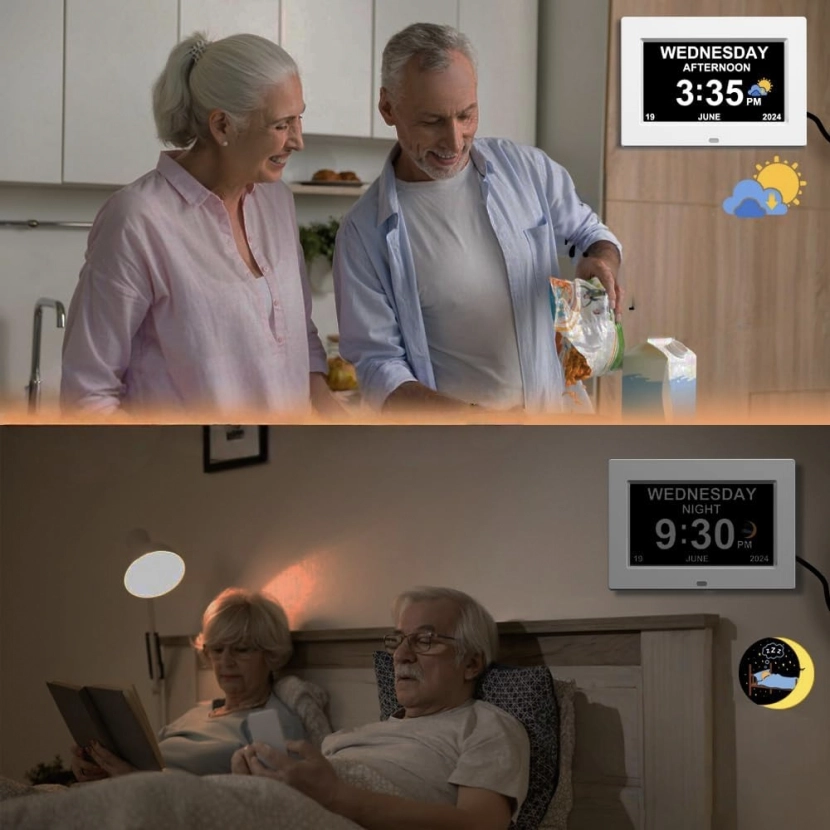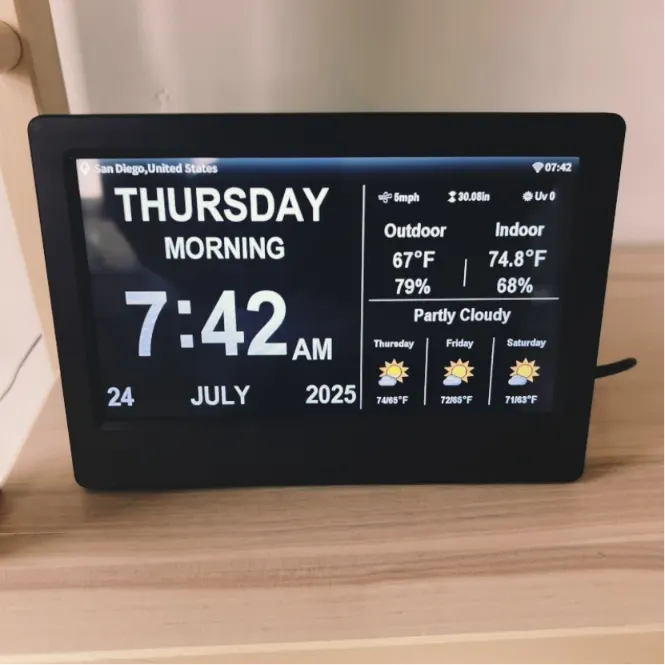
The Growing Importance of Digital Health Solutions for Aging Populations
Demographic Shifts and the Need for Technological Innovation
Lots of people are getting older these days. The World Health Organization says by 2030, one in six folks will be 60 or more. That’s a ton of older adults needing healthcare that works just for them. Regular healthcare can be super busy and slow. So, new digital health ideas are popping up to help seniors in a cool, efficient way.
Tech is a big deal for fixing problems like forgetting stuff, moving slowly, or handling long-term sickness. Digital gadgets make it way easier for seniors to get help. Plus, they let older folks stay on their own longer. As towns figure out how to care for seniors without breaking the bank, smart devices in daily life are becoming a must-have.
Challenges Faced by Seniors in Traditional Healthcare Systems
Older folks often hit roadblocks with regular healthcare. They wait forever for appointments. Medicine schedules can be super confusing. Memory problems, such as dementia or Alzheimer’s disease, make it more difficult to stick to a plan or remember daily trivia.
If they miss a pill or forget a doctor visit, it can cause big trouble. These problems show we need easy, helpful tools that mix human care with automatic reminders.
How can digital products improve the quality of life of older adults
Digital health stuff isn’t just about making things simple. It really boosts how happy and free seniors feel. Wearable gadgets check heartbeats or steps, and apps let folks chat with doctors online. These tools totally change how older adults get care.
One awesome tool is the digital day clock. It’s built just for seniors who struggle with memory or seeing clearly. These clocks don’t just tell time. They’re like daily buddies, cutting down confusion and helping folks stick to their routines with clear pictures and timely beeps.
Understanding the Role of Digital Day Clocks in Elderly Care
What Is a Digital Day Clock and How It Works
A digital day clock is a handy gadget that shows the whole day’s name, the date, and whether it’s morning or evening. It also has reminders you can set up. Unlike old-school clocks that might mix up folks with memory or sight issues, digital day clocks use big, clear letters and bright screens to make things easy to understand.
The 8-inch electronic calendar reminder clock is small but super useful. You just plug it in, and it shows time all day. Seniors can keep track of time without stress. It’s got reminders for stuff like taking pills or doing tasks, too.
Key Features That Make Digital Day Clocks Ideal for Seniors
Digital day clocks are packed with stuff that’s perfect for older folks:
- Big Screens: Most have screens from 8 inches to bigger than 10 inches. You can see them from across the room.
- Easy-to-Read Displays: Bright screens with no glare are simple to read.
- Reminders: Beeps for pills, doctor visits, drinking water, or even hourly chimes.
- Lots of Languages: The 10.1 Wi-Fi Digital Calendar Clock works in over 10 languages, so it’s great for everyone.
- Room Checkers: YIAISIGN’s clocks show temperature and humidity to keep folks comfy.
These clocks have a low-glare screen that’s easy on the eyes. They dim at night from 7 PM to 7 AM so they don’t bother you. They also give hourly updates, lots of alarms, and track time all day to help out.

Benefits of Using a Digital Day Clock in Home and Institutional Settings
At home, digital day clocks help seniors stay on track without someone always checking on them. Clear information can calm anxiety.In places such as nursing homes or hospitals, digital clocks make it easier for staff to share information, especially those with dementia or Alzheimer’s, to access information.
Enhancing Independence and Safety Through Smart Devices
The Role of Visual Aids in Supporting Memory and Orientation
Memory loss can mess with short-term recall, but spotting patterns sticks around longer. Visual tools like digital day clocks use this to help. They show clear stuff like full day names (“Monday,” not “Mon”), color-coded times (morning or night), and big letters. These make it easier for seniors to stay on top of things naturally.
For example, YIAISIGN’s low-glare screen is comfy to look at for folks needing clear time and reminders. This steady visual stuff cuts down on getting lost during daily switches, which is a big deal for dementia patients.
Voice Control, Reminders, and Remote Monitoring Capabilities
Lots of digital day clocks now have Wi-Fi. The 10.1 Wi-Fi Digital Calendar Clock is a smart gadget made for today’s needs with its Wi-Fi tricks.
Wi-Fi clocks let family or caregivers change settings through apps. They can tweak pill times or send sweet notes from far away. Some clocks might soon work with voice helpers like Alexa or Google Assistant.
Remote checking lets families make sure their loved ones are doing their routines without being too pushy. It’s a nice mix of keeping safe and letting folks have their space.
How Aging Technology Encourages Autonomy at Home
Tech shouldn’t take away human connection. It should help seniors stay on their own. By handling stuff like pill or meal reminders, digital day clocks let seniors run their days with confidence.
These gadgets are like “digital pals.” They help folks live independently and take some pressure off caregivers who might otherwise watch them all day.
Future Trends in Digital Health and Aging Technology
Artificial Intelligence and Predictive Health Monitoring
The future of aging tech is pretty exciting, with AI leading the pack. Smart sensors in homes could notice changes in how someone walks, hinting at falls or sickness before it gets bad. This means help can come fast.
When mixed with AI that learns someone’s habits, like sleeping or eating, future gadgets could give custom health tips way beyond basic beeps.
Wearable Devices Combined with Stationary Smart Displays
Wearables keep an eye on stuff like heartbeats or steps all day. Stationary gadgets, like YIAISIGN’s digital calendar clocks, show daily plans clearly in homes.
Together, these give a full view of health. Wearables track movement, while clocks show routines, mixing active watching with steady help.
The Potential for Interoperability Across Smart Home Ecosystems
Smart homes are getting better at teaming up. Gadgets could work together smoothly. For example, thermostats might change based on motion sensors. Lights could shift to help you sleep better. Alerts could go out if health monitors spot something weird.
Digital day clocks could be the main hub in these setups. They’d show schedules and also manage other smart gadgets based on what users do.
Shenzhen Yijing Technology Co., Ltd. offers custom options if you ask. Clients can make solutions that fit right into existing smart systems while meeting specific needs.
FAQ
- What’s the difference between a digital clock with ordinary clock?
A digital day clock shows way more than time. It has full day names, dates, parts of the day, and custom reminders. This makes it awesome for seniors who get mixed up by regular clocks because of memory or sight troubles. - Can I use a digital day clock without internet access?
Yup! Lots of models work offline for basic stuff like time and alarms. But Wi-Fi ones add remote updates, which are super handy for caregivers tweaking things from far away. - Do digital day clocks support multiple languages?
The 10.1 Wi-Fi model works in over 10 languages, so it’s good for tons of homes around the world. - Where can I learn more about trusted brands offering reliable products?
YIAISIGN, owned by Shenzhen Yijing Technology Co., Ltd., makes digital photo frames (5 to 65 inches), digital calendar clocks, all-in-one machines, Android advertising displays, digital signage, and portable monitors. They’ve got over 15 years of know-how and a strong team for research, building, and selling.
Want to help seniors live independently with smart care tools? Reach out Shenzhen Yijing Technology Co., Ltd. today or check out our full range at YIAISIGN.com!


